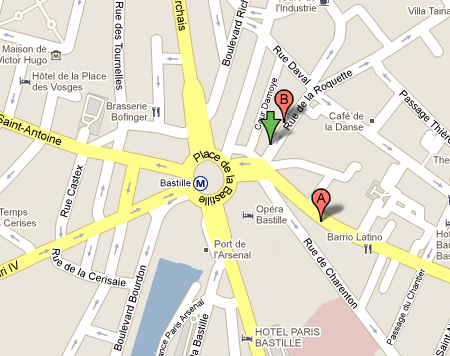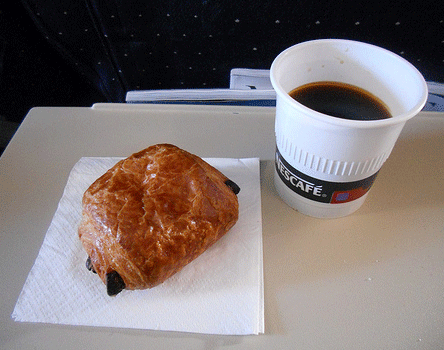In the comments to my blog post “A Tale of Two Countries, and their Snack Foods,” one commenter asked, “Would you be able to tell us where in Paris you had that memorable pain au chocolat?”
Good question — and I’m using good question the way a politician does, when s/he doesn’t have an answer. When I travel I lean on a guidebook for things like hours, directions and tips, but I also do a lot wandering around on foot, and tend to eat at whatever place looks appetizing.
I learned this tip from my cousin. We were rambling through Seattle one day in search of lunch, and I had my nose in my guidebook. He suggested winging it, and we ended up eating in Chinatown at a place called Uncle Ball’s. The food was just okay, but eating at a place with such a bizarre name was one of the highlights of our trip.
But I digress. I didn’t actually know the name or exact location of the patisserie in Paris, but I did know it’s general location, since I had gone to the Saturday produce market at Place de la Bastille:
Then I wandered down a side street, went by a good-looking patisserie, and bought goodies there. I also remembered it was right around the corner from a Starbucks.
Thanks to the awesome power of Google (and I mean awesome in both senses of the word), it’s alarmingly easy to retrace my steps. I didn’t know the name of the side street, so I simply mapped the locations of Starbucks nearby.
From that I knew the Bucky’s I was thinking of was on Rue de la Roquette. I used Google Street View to check out the street corner a half-block away and then panned around, and … voilà:
There’s your answer: La Tradition du Pain, at Rue Duval/Rue Saint Sabin. If you paste the store’s name into Google, you can even see some Italian guy’s photo of the display cases on Flickr.
His photo caption sums up my thoughts pretty nicely: Aspettavo il giorno successivo solo per fare di nuovo colazione lì sperimentando altre squisitezze!
(P.S. – Don’t read Italian? Try dropping the sentence into Google Translate.)






